You can easily set up an AWS VPN gateway using UTunnel's VPN as a Service. We are listed in the AWS Marketplace and this guide helps you to set up an AWS EC2 instance with our marketplace AMI and UTunnel's On-Premise deployment option.
With the On-Premise option, you can bring in any Ubuntu 20.04 loaded server with a public IPV4 address. It can be at your premise or a physical server located in a data center or a virtual machine (except containers) with a cloud provider on your own account.
Please follow the following instructions to complete the VPN gateway setup.
1. Create an EC2 instance first. On the Amazon Machine Image (AMI) selection page, select AWS Marketplace from the left side menu options, and search for utunnel. You should see UTunnel VPN in the search result. Click the Select button on the right side and proceed with instance launch.
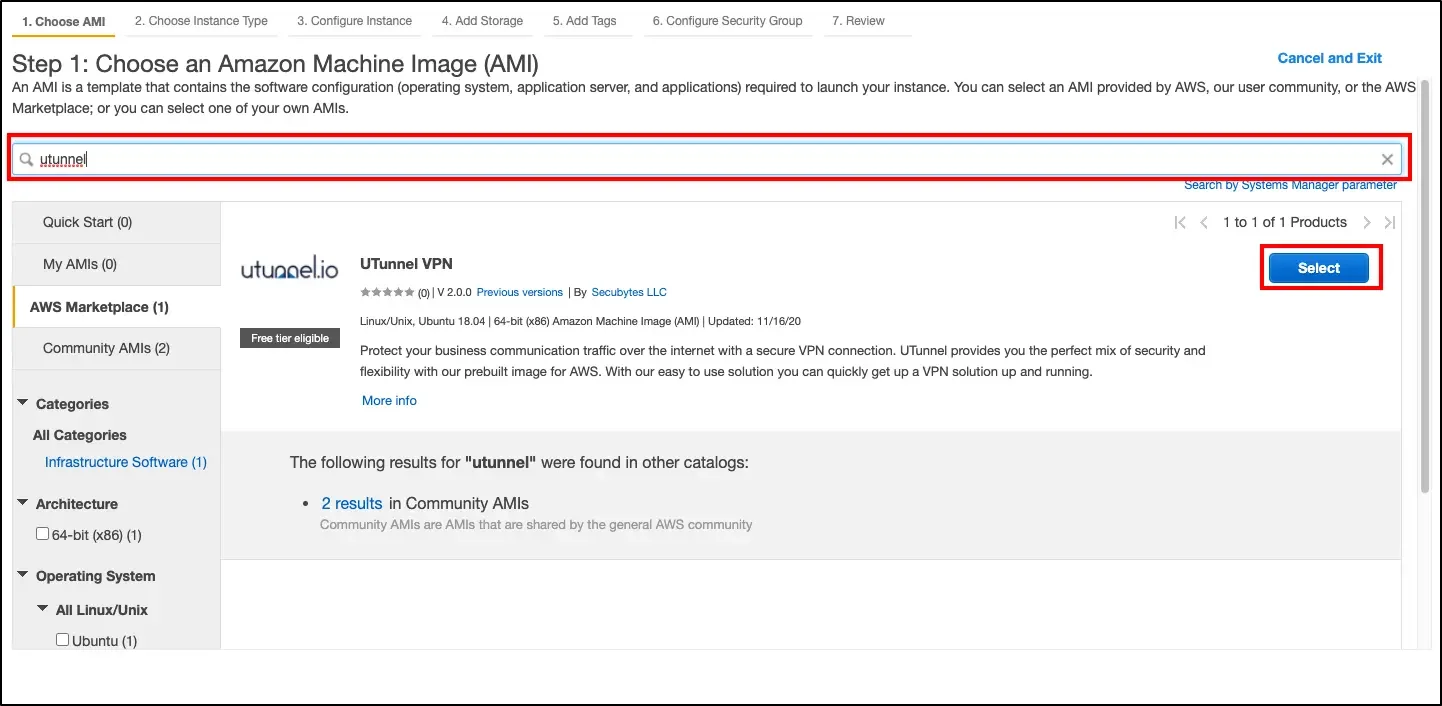
2. Log in to our dashboard and click on the CREATE button in the Create an Access Gateway section.
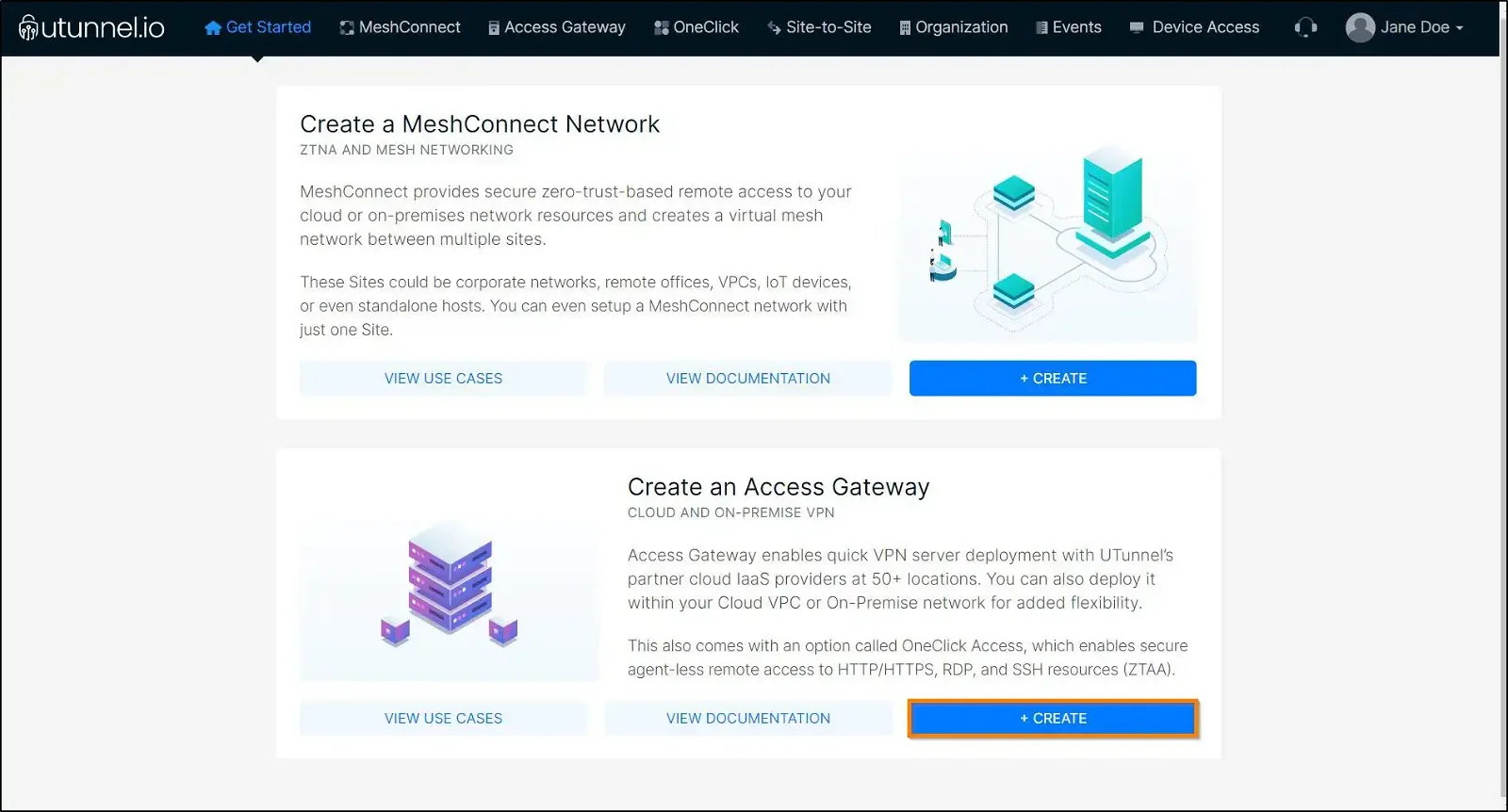
3. You will land on the Create Access Gateway screen. Here you can provide your billing address details. This step is optional, you can either provide the details and click on the Proceed button or select the Skip button to do it later from the Billing tab on your dashboard.
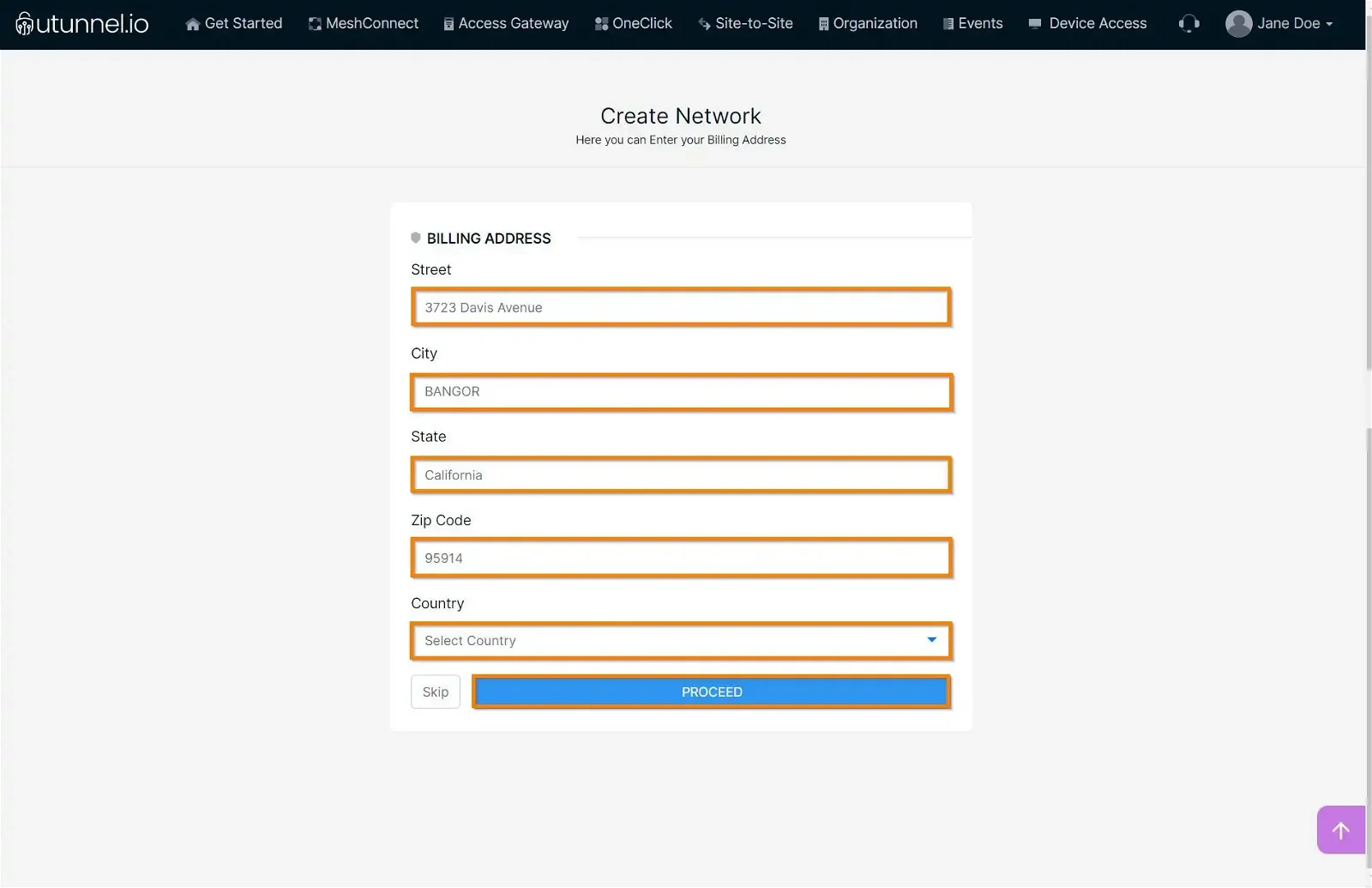
4. The next step is to select the On-Premise option and enter the Access Gateway details as given below:
After configuring your Access Gateway specifications, proceed to click on the Proceed button.
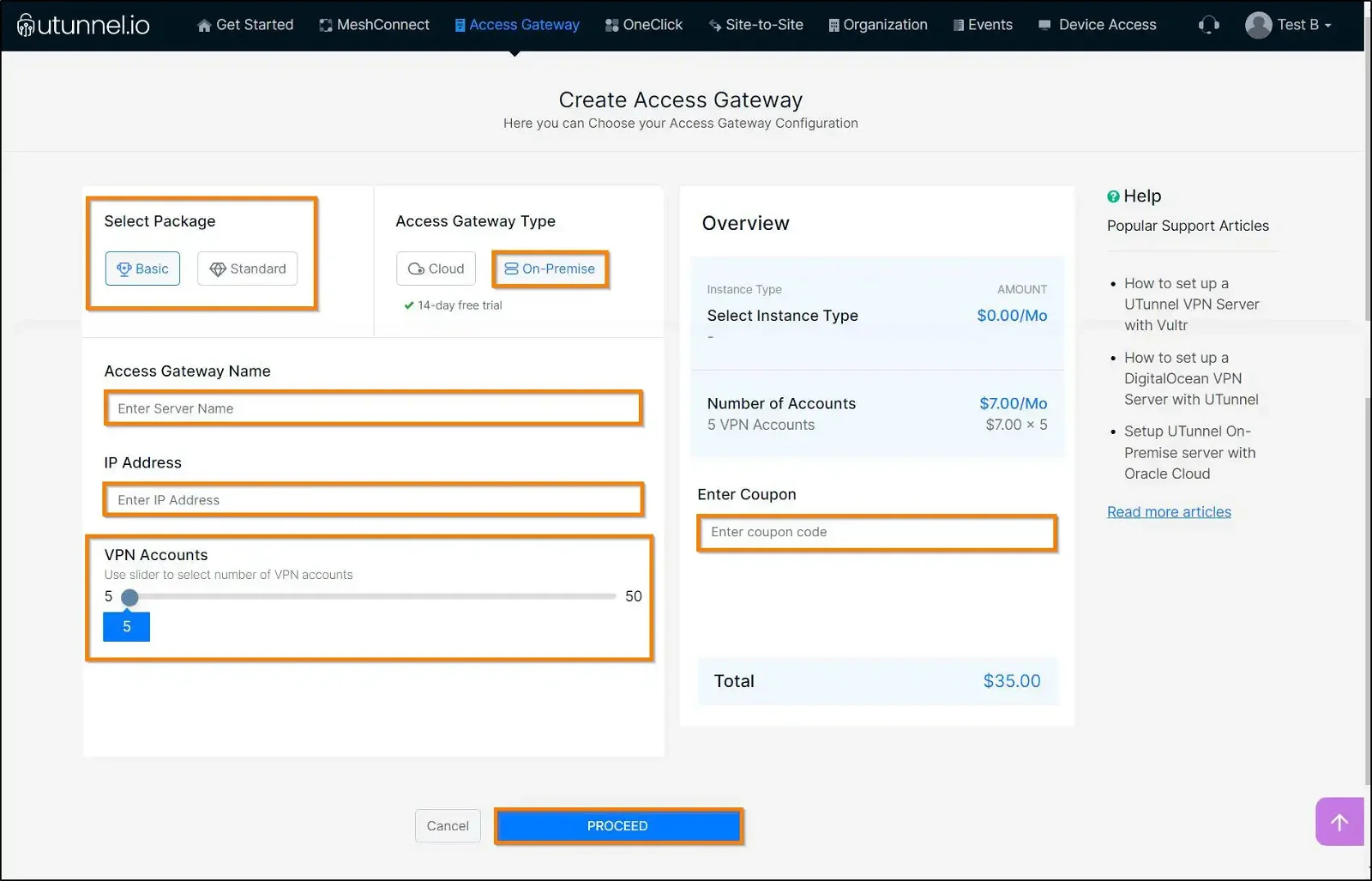
5. You will be now on the Order Summary page which displays the details of your order. Click Proceed.

6. Now enter your credit card details as required on the screen and click on the START YOUR TRIAL/Pay Now option.
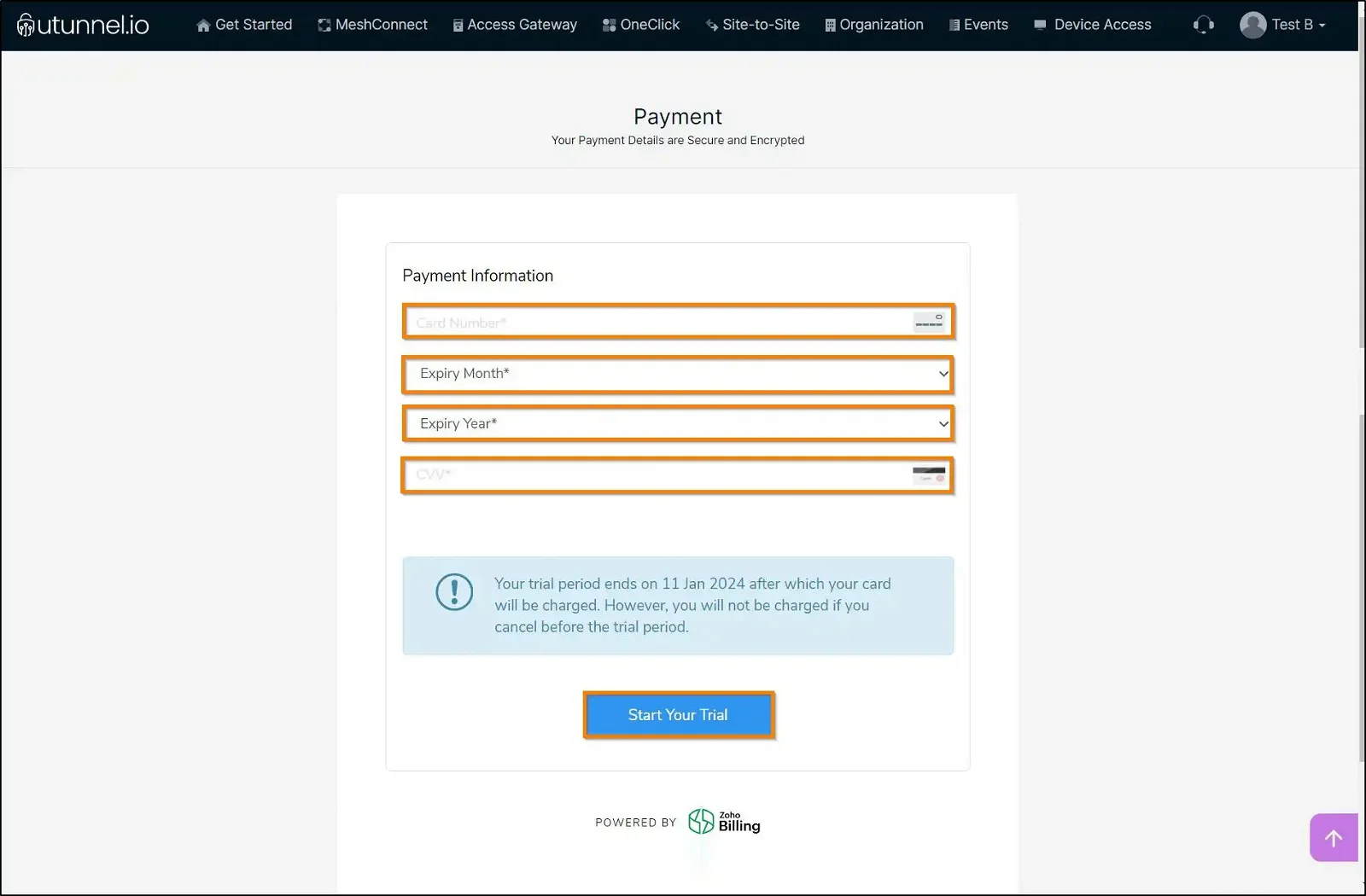
7. You will be redirected to the dashboard now. Here you can see the status of Access Gateway creation.
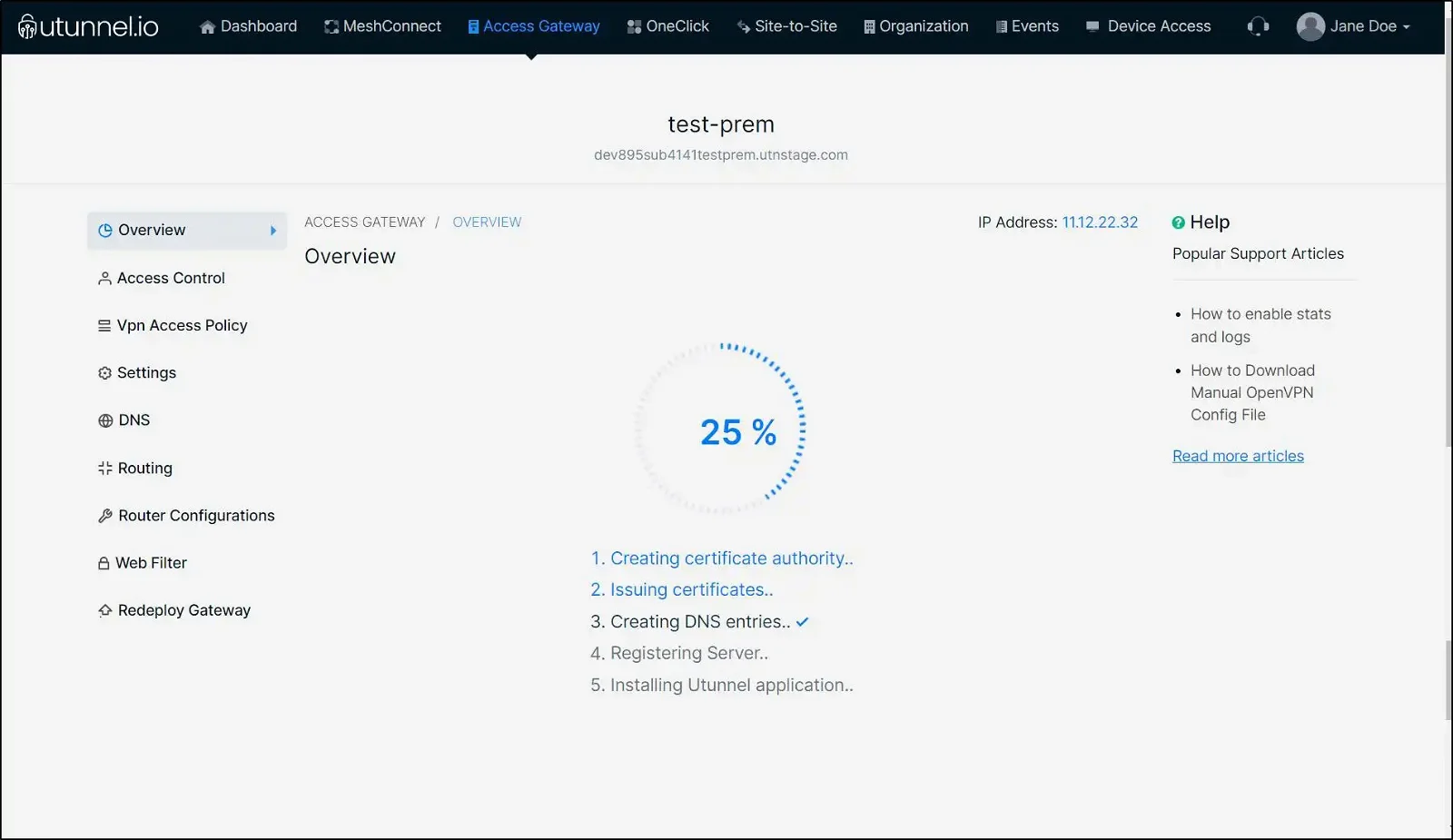
8. You will be redirected to the Access Gateway Overview page, where the registration token is displayed. Please copy the registration token to a safe place, this token is required when you deploy the Access Gateway.
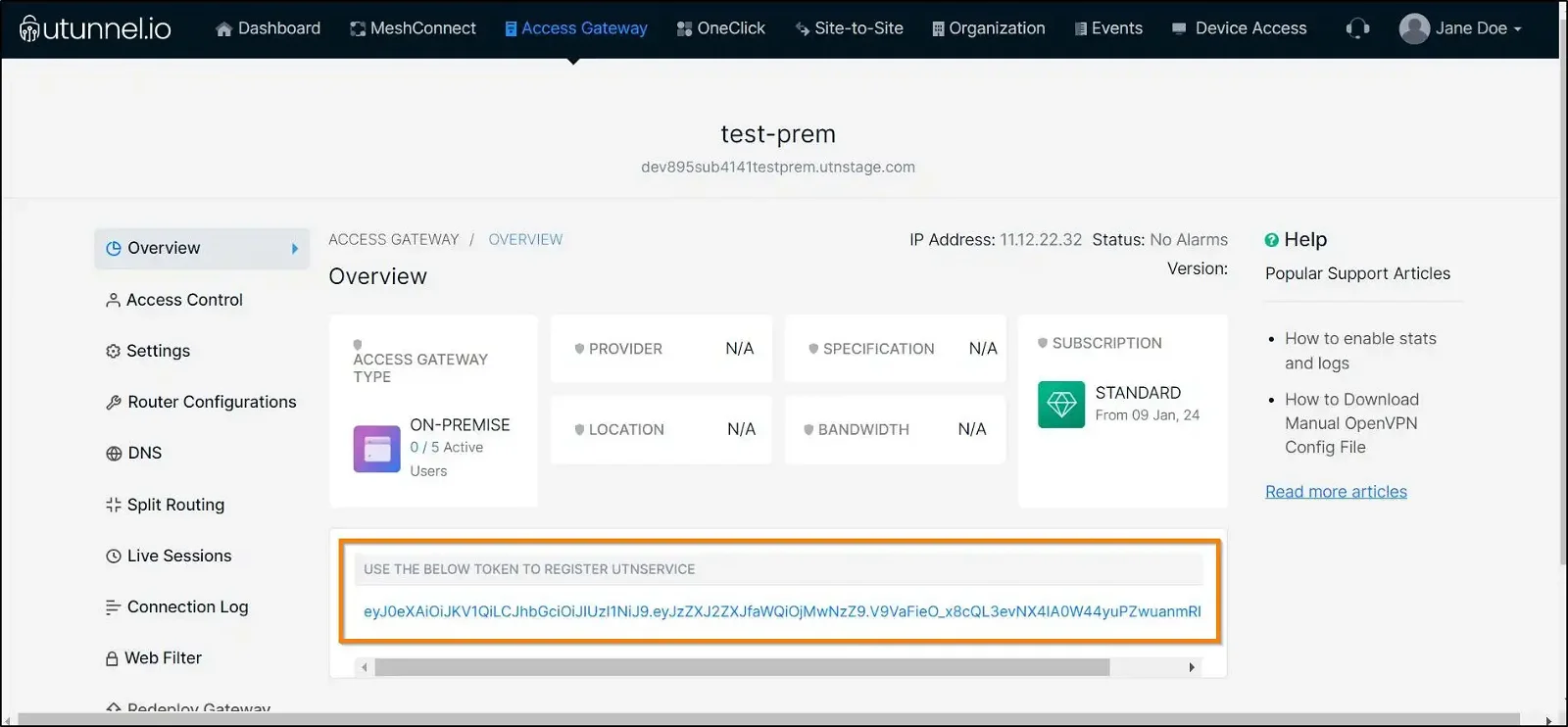
9. Connect to your server via SSH and complete the registration process. You may need to provide the registration token obtained in Step #8 to complete the registration process. Once the registration is complete, your Access Gateway will be ready to use. You may run the following commands to register your instance and start the UTunnel service on it.
sudo /utunnel/bin/utnservice register YOUR_REGISTRATION_TOKEN
Remember to replace the string YOUR_REGISTRATION_TOKEN in the first command with the actual registration token obtained in step #8
Now it's the time to start UTunnel Service on your server. Run the following command for the same.
sudo /utunnel/bin/utnservice start
10. You also have to make sure that inbound connections to the following ports are allowed to accept VPN connections.
Ports used for OpenVPN connections
Ports used for IPSEC connections
Ports used for managing UTunnel services like live sessions, firewall, and site-to-site tunneling.
Now your AWS VPN gateway is ready for use. You can invite users to your Access Gateway and start using the VPN.